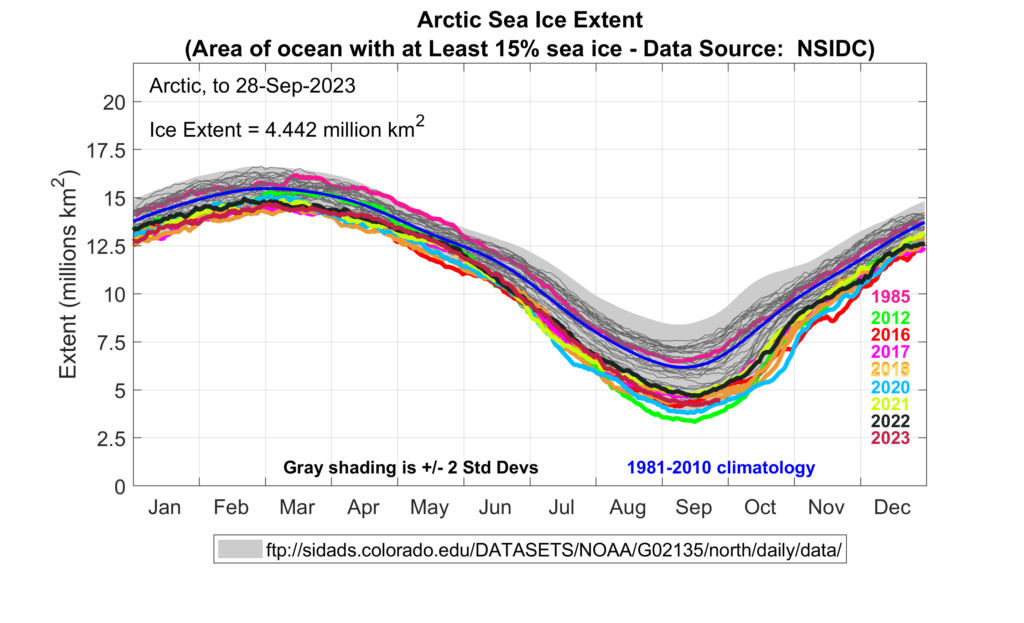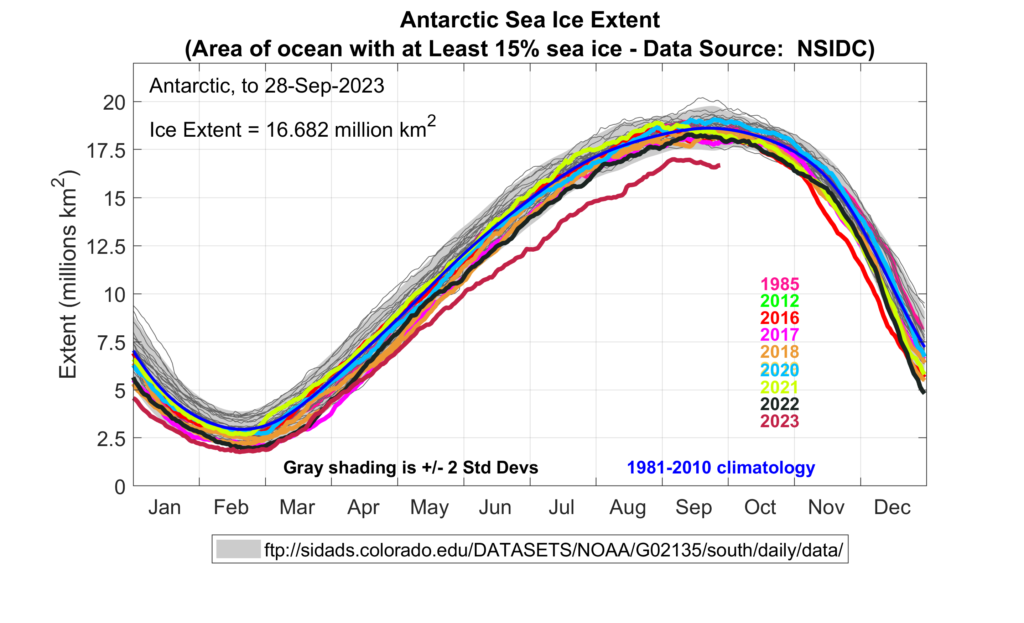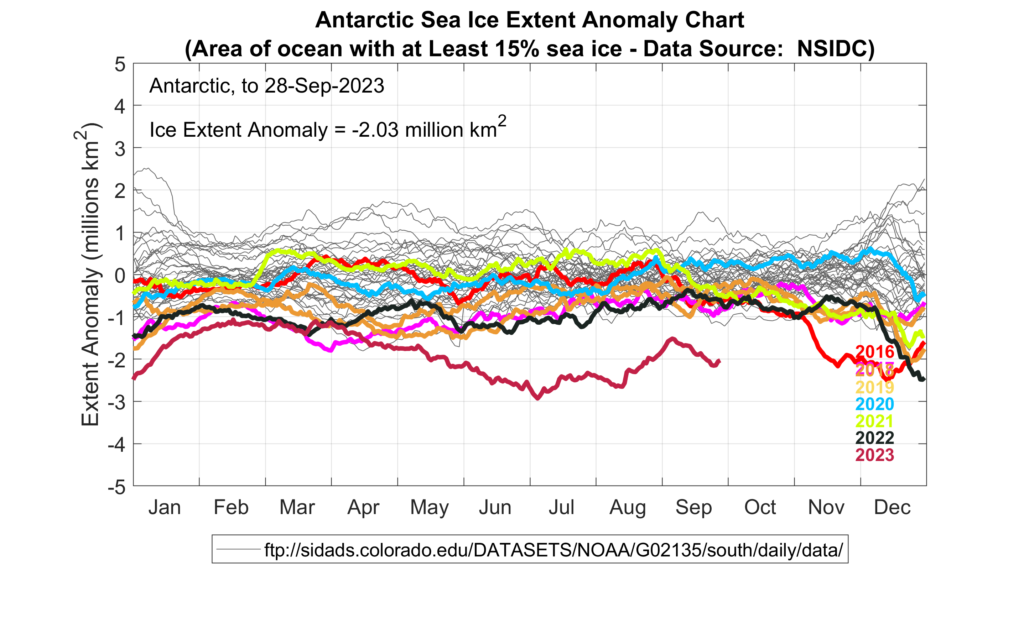September 28 2023: Sea ice extent has now turned around and had an increase, at the rate of 4.30%, from the level on 09/20/2023 of 4.251 M km2 to 4.442 M km2 for this week. Preliminary analysis by the NSIDC finds that this years minimum extent occurred on 09/19/2023 at an extent of 4.23 km2 . This is the sixth lowest minimum extent in the satellite record.

Data Source: National Snow & Ice Data Center (NSIDC; https://nsidc.org/).
The negative sea ice anomaly this week was higher than the anomaly of -1.273 M km2 on 09/20/2023 to a greater negative anomaly of -1.457 M km2 on 09/28/2023, and so more anomalously negative for this time of year.

Data Source: National Snow & Ice Data Center (NSIDC; https://nsidc.org/).
In the waters around Antarctica, 2023 stands out as an extremely low sea ice year. The record began in 1979 and the sea ice extent this current austral winter season is outside of 6 standard deviations (SD) for the time series. Note that the grey shading in our Arctic sea ice plots (like the one above) is usually two standard deviations, whereas the below plot for Antarctic waters shows six SD. The current situation around Antarctica is a truly extreme deviation from what could be considered normal for the austral sea ice season.

Data Source: National Snow & Ice Data Center (NSIDC; https://nsidc.org/).

Data Source: National Snow & Ice Data Center (NSIDC; https://nsidc.org/).


